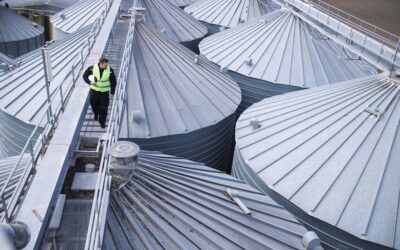Blog
News & Updates
Plastic tanks are the perfect choice for water storage, offering durability, affordability, and safety. Made from high-quality, food-grade plastic, these tanks ensure hygienic water storage for homes, industries, and agricultural needs.
At Ocean Group, we manufacture premium plastic tanks that are UV-resistant, corrosion-free, and designed to withstand extreme weather conditions. Our tanks come in various sizes to suit different requirements, providing long-lasting performance.
Choosing plastic tanks over traditional materials ensures lightweight handling, easy installation, and minimal maintenance. Whether for domestic, commercial, or industrial use, our plastic tanks provide an efficient and cost-effective solution for water storage.
Upgrade to high-quality plastic tanks from Ocean Group today and experience superior durability and efficiency.
Buy the Best Water Tanks Near You -Trusted Ocean Group Deals
Why Local Access to Best Water Tanks Matters When you search for "best water tanks near me," you're likely in need of a reliable, long-lasting water storage solution—fast. From urban homes to rural farms, best water tanks are essential for everyday living, sanitation,...
Your Guide to Water Tank 500 Litre Price & Features
Introduction In today’s world, efficient water storage is more than a necessity—it’s a smart investment. Whether for a compact urban home, a commercial facility, or a rural dwelling, a 500-litre tank is often the ideal starting point. If you’re searching for the water...
Smart Overhead Water Tank Choices for Homes & Industries
Introduction Water scarcity, uneven municipal supply, and rising demand have made water storage an essential consideration in homes and businesses across India. Among the various solutions available, an overhead water tank remains the most practical and effective for...
Why Quality Water Tank is a needs for Every Home and Industry
Introduction Water storage plays a critical role in both residential and industrial settings. In India’s diverse climate, selecting the best quality water tank ensures long-term durability, hygiene, and reliable performance. Ocean Group, also known as Ocean Polymer...
Ocean 1000 Litre Water Tank: Durable & Long-Lasting Option
Introduction Whether you’re a homeowner, business owner, or contractor in Kerala, finding a durable, cost-effective water storage solution is critical. At Ocean Group, we understand that a water tank isn’t just a container — it’s an investment in hygiene, convenience,...
The Rise of Smart Water Management Systems Across India
In a country as diverse and densely populated as India, managing water resources effectively has become both a necessity and a challenge. Rapid urbanization, climate change, and increased consumption have pushed traditional water management methods to their limits....
High-Capacity Water Tanks: Key to All Industrial Water Needs
Introduction: High-Capacity Water Tanks — A Critical Asset for Industries In sectors ranging from manufacturing and food processing to pharmaceuticals, hospitals, hospitality, and agriculture, uninterrupted access to clean and consistent water is non-negotiable. An...
Ocean 5000L High Capacity Water Tank — Solutions Built to Last
Water is the backbone of any commercial or industrial operation. From maintaining hygiene to supporting production processes and ensuring seamless day-to-day functioning, consistent water supply plays a vital role in business sustainability. However, managing this...
Ocean Group High Capacity Water Tanks – Trusted Water Storage for Every Season in Kerala
Water is essential, and so is how you store it—especially in regions like Kerala, where seasonal changes and inconsistent supply can affect daily life. That’s where Ocean Group’s high capacity water tanks come in. Designed to withstand the demands of every season,...








